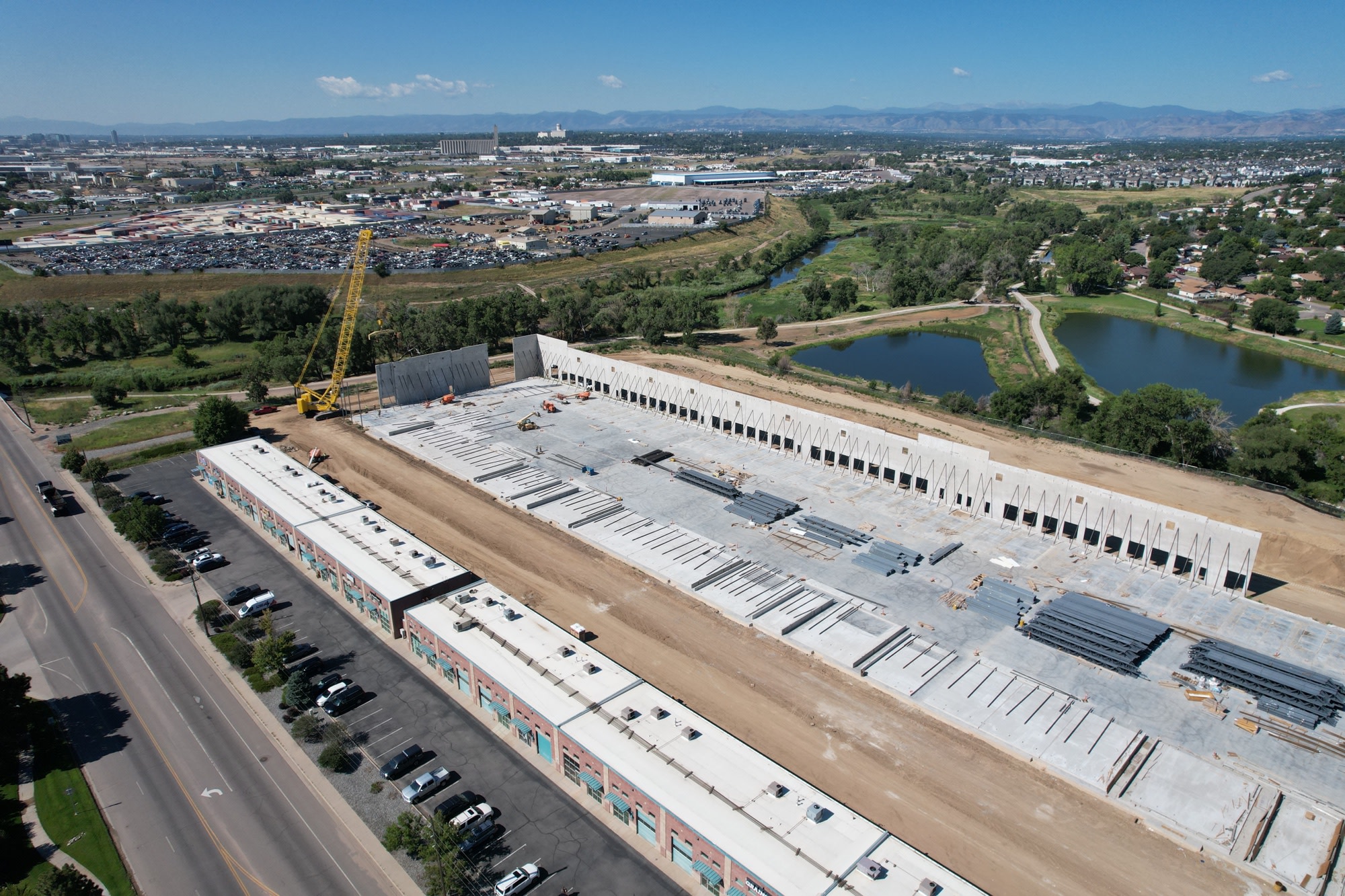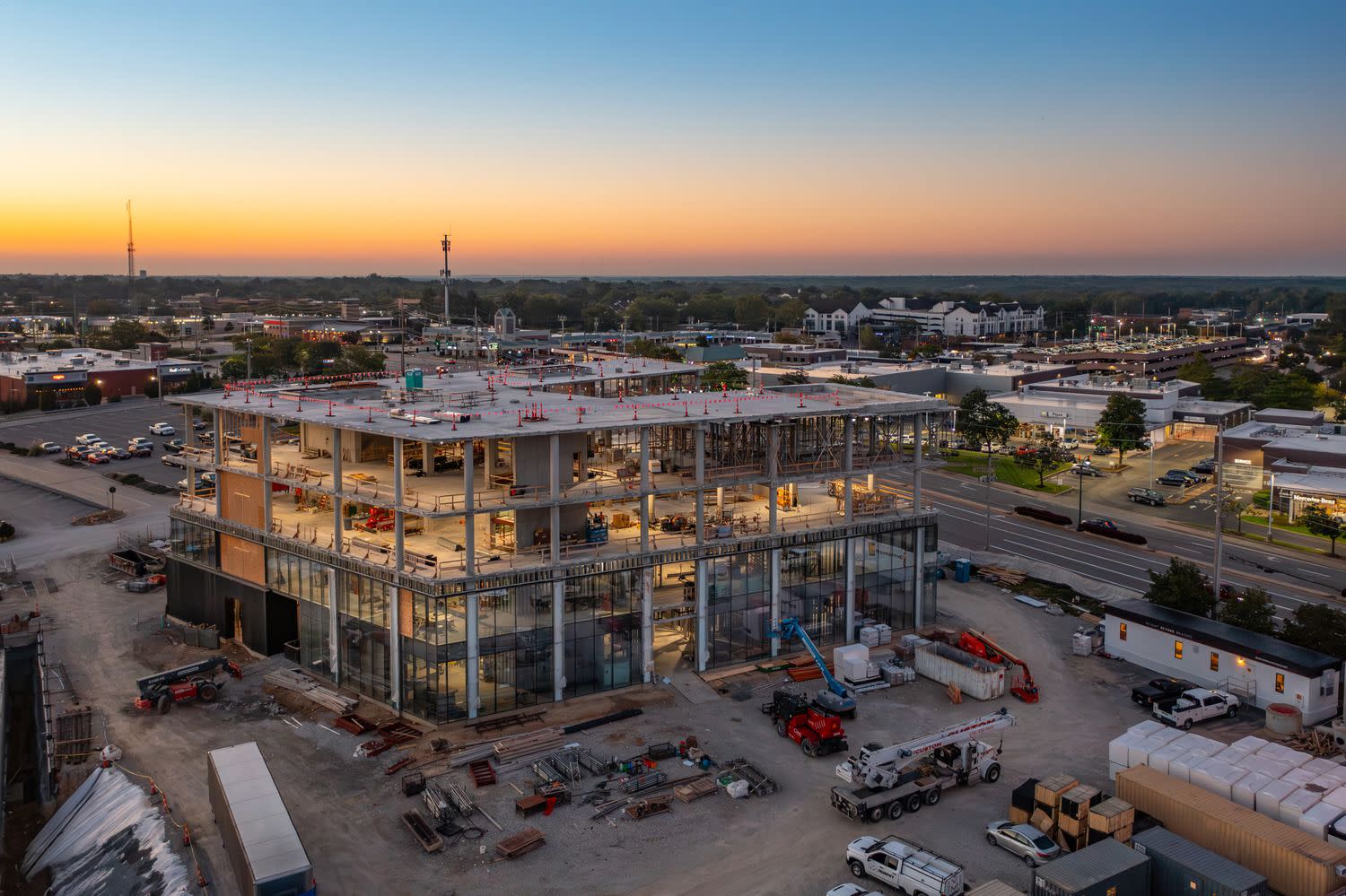Customer Story
Driving smarter building using one single platform
By embracing Procore’s full platform, Brinkmann Constructors unified processes, improved forecasting and found unexpected efficiencies

The Challenge
Brinkmann Constructors, an employee-owned GC with five regional offices across the U.S., started using Procore in 2016 — but for years had only scratched the surface. Tools were underutilized, so project data remained siloed and full visibility into project performance was lacking. As the company grew, it needed a better way to standardize processes, improve data quality and drive greater efficiency across the board.

The Solution
Brinkmann launched a company-wide initiative to modernize its processes. That meant revisiting every underused Procore tool, developing SOPs and training teams to adopt more consistent, tech-enabled workflows.

The Results
- Improved Visibility: Financials now live in one system, giving leadership and project teams real-time insight into commitments, forecasts and risk.
- Stronger Data Governance: SOPs and analytics tools improve consistency across teams, facilitating the development of KPIs and project performance metrics built on solid, centralized data.
- A Taste for Innovation: Greater Procore adoption opened the door for BIM, inspections and action plans, turning every jobsite into a more connected, safer and tech-savvy environment.
“Procore is helping us be better builders on our actual sites — but also better managers and advocates for our clients.”

Jared Cox
Director of Project Controls
Brinkmann Constructors
Turning Adoption into Advantage
At Brinkmann Constructors, being 100% employee-owned means that every team member is accountable for working smarter, not just harder. That culture of ownership has shaped the company’s growing focus on project controls, data-driven decision-making, and continuous improvement. For Brinkmann, technology isn’t just a tool — it’s a key part of delivering quality results for clients and empowering teams to execute with clarity and confidence.
So when Jared Cox joined Brinkmann in 2021, he saw an opportunity to help elevate Brinkmann’s processes. The company utilized Procore, a construction software platform designed to handle preconstruction to closeout construction needs. However, the platform’s capabilities remained underused over the years. “We were using Procore, but most of the tools were underutilized,” Cox recalls. “That led to slower project closeouts, reduced visibility for leadership, and fewer insights for our clients.”
It was clear there was untapped potential. With full support from company leadership, he launched a comprehensive review of Brinkmann’s Procore usage. The goal: identify what was working, fix what wasn’t, and unlock the full value of a unified construction platform.
“We started leveraging Procore resources to help with training,” he says. “We got leadership involved. And we began educating teams on what the tools could do.”
One Platform, No Silos
One of Brinkmann’s first major initiatives was joining the beta for Procore Project Financials, a suite of tools designed to streamline budgeting, forecasting, and cost management. Around the same time, Cox stepped into a leadership role overseeing project controls — a new area of strategic focus for Brinkmann.
Early wins came fast. What was once documented in multiple places became streamlined — a single source of truth for users. “We had Excel sheets over here, Word docs over there, folders everywhere,” Cox says. “Now it’s all in one place — organized, searchable, and standardized.”
The impact went beyond project teams. With Procore Financials, company leadership gained instant access to real-time budget data, forecasts, and risk assessments — no more waiting for meetings or interpreting PDFs. “When leadership meets with a project team, they can open the budget and say, ‘Here’s exactly where this number came from,’” Cox explains. “That level of transparency is huge for trust and decision-making.”
With all projects centralized on the platform, Brinkmann began building a robust internal database of performance metrics. “We even worked with Procore to build a custom budget comparison tool,” says Cox. “Now teams can see exactly what changed between budget versions — no guesswork, no surprises.”
That data-centric approach is already paying off. Brinkmann is using the insights to identify general conditions overruns early for possible mitigation, improve forecasting accuracy, and drive more consistent project outcomes across teams.
Innovation That Sticks
Adopting Procore Project Financials wasn’t just a process improvement — it was a mindset shift. Once Brinkmann’s project teams saw how Procore could streamline budgeting, forecasting, and change management, it sparked a deeper curiosity across the organization. That early success became the launchpad for broader digital transformation.
“It opened people’s eyes,” says Cox. “They started asking, ‘What else can Procore do? What other pain points can we solve?’ That curiosity became momentum, and that momentum led to real innovation.”
One of the first areas they expanded into was Procore BIM. Brinkmann quickly rolled out model access on half a dozen projects, giving field teams the ability to view 3D models in real time — right from their mobile devices. That shift enabled better coordination, earlier issue detection, and fewer disconnects between design intent and field execution. Everyone, from project engineers to superintendents, began working from the same visual source of truth.
“We used to rely on printed drawings and email threads to clarify details,” Cox explains. “Now, with BIM in Procore, the models are right there — live and up to date. Teams can walk the site and visualize what’s coming next with far more confidence.”
From there, Brinkmann’s innovation journey accelerated. With company leadership emphasizing quality and safety as two top-tier priorities for the year, Cox’s team turned to Procore to support those goals. They partnered with Procore’s implementation experts to stand up structured workflows using Inspections and Correspondence, making safety and quality tracking more proactive, consistent, and transparent.
“It wasn’t just about adopting a tool — it was about building a program,” Cox says. “We needed to make sure that everyone, from the field to the office, knew what to look for, how to document it, and how to follow up. Procore gave us the framework to do that.”
With Inspections, Brinkmann’s teams can now perform standardized quality checks and safety audits directly from the field, flagging issues in real time and linking them to the relevant drawings, photos, or responsible parties. With Correspondence, Brinkmann anticipates that communication around compliance, vendor coordination, and issue resolution will be documented, searchable, and accountable—reducing potential delays and closing the loop faster.
In addition, Brinkmann expects that tools like Action Plans will help formalize recurring processes—from safety walkthroughs to commissioning—ensuring consistency across projects and creating traceable accountability. Field teams will be able to follow step-by-step procedures that are tied directly to project milestones, eliminating ambiguity and reinforcing Brinkmann’s high standards for quality execution
“Our leadership named quality and safety as major company-wide initiatives this year,” Cox says. “We looked at what platform could help us deliver on those goals in a scalable, transparent way — and Procore was the clear choice.”
By tying product adoption to company priorities and encouraging teams to explore new features hands-on, Brinkmann has created an environment where innovation isn’t top-down or one-time — it’s woven into the culture of every project. What started with a single product has become a full-platform transformation.
A Culture of Progress
For Brinkmann Constructors, the success of their Procore journey goes beyond streamlined workflows or improved data visibility — it’s about fostering a culture where innovation is embraced, and every team member feels empowered to improve how they work. That shift didn’t happen overnight. Cox credits the progress to a company-wide mindset change, grounded in intentional education, leadership alignment, and a focus on making technology feel practical and approachable.
“Change is hard — especially in construction, where people take pride in proven processes,” Cox says. “But when you show people how the tools make their jobs easier, help avoid mistakes, reduce rework, and ultimately get them home safer at the end of the day — that changes the conversation.”
This mindset has transformed how Brinkmann approaches technology adoption. Training isn’t treated as a one-time onboarding event — it’s an ongoing investment. Teams are encouraged to explore Procore's tools hands-on, ask questions, and identify how each feature connects to their day-to-day responsibilities. That level of engagement has turned users into champions, and silos into collaboration hubs.
Today, Brinkmann continues to expand their use of the Procore Platform, taking advantage of tools across the entire project lifecycle. In the field, tools like Daily Logs, RFIs, and Submittals have reduced manual coordination and kept projects on track. Meanwhile, Field Productivity tools are helping Brinkmann better understand labor performance, track time, and manage crews with precision — especially on complex, multi-phase projects.
As Procore continues to evolve, so does Brinkmann. The company has adopted a mindset of continuous improvement, actively working with Procore’s team to test new features, provide feedback, and explore opportunities to shape future development. That spirit of collaboration has helped the company stay at the forefront of construction technology, without losing sight of what matters most: building smarter, safer, and with greater accountability to clients and teams.
“Procore is helping us be better builders on our sites,” Cox says, “but also better managers and stronger advocates for our clients. It’s not just a software platform — it’s part of how we operate and grow.”



